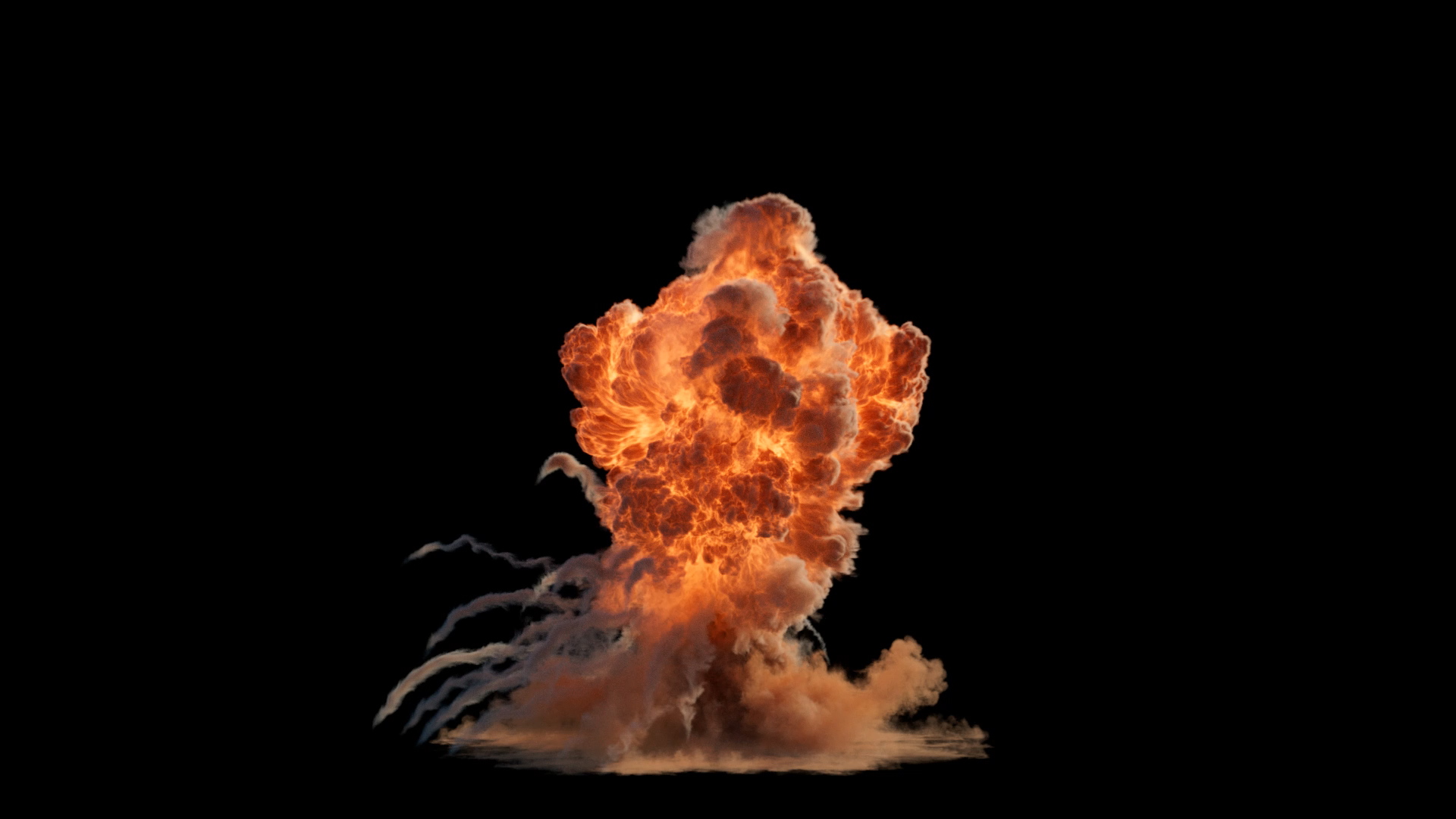| On this page |

SOP and DOP Pyro ¶
The Pyro FX shelf is now divided into SOP and DOP shelves.
-
The SOP Pyro FX tools generate pyro simulations using the Pyro Solver SOP, which is a SOP level wrapper around the Pyro dynamics building blocks. These tools provide a fast and friendly user experience, and avoids the need to build a dynamics network manually.
-
The DOP Pyro FX tools create pyro networks that include sourcing on the at the geometry level, a DOP network for the simulation, and an output object to import results of the simulation back into a renderable object.
SOP Pyro shelf tools ¶
There are several new SOP Pyro FX tools available on the shelf.
Creates multiple small scale bullet hit effect with RBDs, instanced debris, particles, and dust.
Creates a small scale candle flame and generates a melted candle model.
Creates a small scale smoke simulation that bubbles up from a glass and sinks to the ground.
Creates a simple RBD simulation that emits dust as the pieces break apart.
Creates a large scale dust explosion that develops into a fireball as the simulation develops.
Creates a medium scale wispy smoke simulation that rises upward smoothly.
Creates a medium scale wispy smoke simulation that rises upward turbulently.
Creates a large scale aerial explosion that moves horizontally.
Creates a large scale aerial explosion that moves towards the ground.
Creates a large scale shockwave simulation.
Synchronized Ground Shockwaves
Creates a medium scale multi-shockwave simulation with synchronized start frames.
Creates a medium scale multi-shockwave simulation with staggered start frames.
Creates a large scale explosion and shockwave that expands forcefully outward and moves rapidly upward.
Creates a large scale explosion, smoke trails, and shockwave that expands forcefully outward and moves rapidly upward.
Creates a small scale fire simulation with a transparent source and doesn’t emit any smoke.
Creates a thruster exhaust setup layering together multiple VDBs and sparks.
This shelf tool uses the new Pyro Thruster Exhaust SOP, which creates volumes and particles to simulate thruster exhausts without the need of simulation.
Creates a particle simulation for a portal that rotates in a circular motion before dissipating.
Creates a large scale explosion that expands outward, rises quickly, and has debris emitting trails of smoke.
Creates a medium scale fire and spark simulation in SOPs that is converted to 2D using COPs tools.
This existing shelf tool was updated with the ability to use ML Volume Upres node to upscale and sharpen the smoke simulation using a pretrained ONNX machine learning model. It creates thick cloud-like smoke rising from a spherical base, and is useful as a starting point for simulating scenarios such as chimney smoke or cooling tower steam.
DOP microsolvers ¶
-
New
Gas Remap DOP allows you to shift and scale a scalar volume field to fit a new range. A ramp can be used to further customize the mapping.
-
New
Gas Dissipate 2.0 DOP performs several types of dissipation on the specified field. This will drive the fields value to the goal value, causing the smoke to disappear over time.
-
Controls for the influence of turbulence added to the Pyro Solver DOP.
-
New
Gas Burn DOP controls the dissipation of the flame field in the Pyro Solver. It is also able to emit smoke and temperature into the simulation based on the dissipated flame amount, and you can use the flame field to add divergence into the simulation causing expansion.
COP Pyro ¶
Simulating fire and smoke is typically done by generating volumetric data in SOPs or DOPs. COP Pyro is a 2D method of creating very fast fire and smoke with an infinite timeline. It lets you create a sparse GPU Pyro solver and adjust the look and feel of the fire or smoke in realtime.
Note
Although COP Pyro is in COPs, you need DOP level permissions to use it. This means that COP Pyro is not available in Houdini Core, but only in Houdini FX, Houdini Apprentice, Houdini Indie, and Houdini Education.
COP Pyro examples ¶
There are several Pyro Configure examples available through the tab menu in Copernicus. These are similar to shelf tools that put down networks of nodes for learning purposes. Typically these will act as a starting point to using Pyro in COPs.
Illustrates a simple rising dense smoke cloud. It can be used as a template for building smoke in your scene.
Illustrates a minimal fast moving fire setup that can be used as a template for building fire in your scene.
Illustrates a falling dry ice effect. It demonstrates setting up colliders in Pyro, and shows how to send more than one thing into the passthrough port by using cables. It also shows how to limit the rasterizing of smoke to a depth map.
Illustrates 3 colored smokes interacting. It also demonstrates how to use the feedback wires to add additional fields to the simulation.
FLIP ¶
-
New
Neural Point Surface SOP takes a point cloud as input and reconstructs a VDB surface from it. It contains multiple specialized pretrained models to yield specific looks depending on the material being surfaced. In general, this node should allow you to reconstruct smooth surfaces while preserving the sharp, high frequency details described by the point cloud.
-
Options to use the Neural Model are also available on the Particle Fluid Surface SOP.
-
Particle Fluid Surface SOP now has the ability to partition large point clouds which can be processed on OpenCL devices with limited amount of memory.
-
Controls for Wind Direction, Visualization, Bindings, and Open CL added to the
Gas Wind DOP.